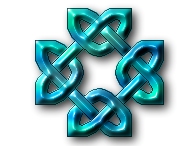

Gregalachs have greater reason then most Scots to celebrate the historic return of the Stone of Scone to Scotland this summer as the Stone is a clan "heirloom" that has possibly been in possession of our gene pool for up to 2,600 years. Most recently this stone was named after Scone, the former capital of Pictavia on the banks of the Firth of Tay, where Kenneth MacAlpin brought the Stone to sit beneath his pillar, The Palladium of Scotland, The Stone Of Destiny, and "Lia Fails." Every Scottish king until 1296 AD and quite a few Irish kings before that at Tara, have been crowned over it. Reportedly, there is a footprint carved in the stone, that would be filled with the soil from all the main districts of the Kingdom which the High King would then ritually stand upon.
The "biblicized" story is that the Stone was taken from a pillar on which the Hebrew Patriarch Jacob slept when he had his vision of a ladder of angels. From Palestine the Stone traveled through Egypt and Sicily to Spain. From there it was probably brought to Ireland by Kenneth's and our ancestors the Milesians around 350 BC (some sources say 700 BC). Legends say that the Lia Fails would sing when the righful King stood upon it. It was one of the four treasures of Ireland possessed by the Tuatha De Dannan. These later came to be associated with the Grail legends and the suits of regular playing and Tarot cards.
The descendants of the Milesian king Eremon took it with them when they were driven up to the region of Northern Ireland (Country Antrim) called Dalrada around 200 Ad. In 503 AD a tribe of Dalriad Scots under Fergus Mac migrated to the Isle of Mull, taking the Stone with them. In 730 AD Achauis, a descendant of Fergus Mac married a Pict princess Fergusia, who was of the royal Pict Alpin line. Achuauis' son was Kenneth Mac Alpin's father who was Dalraid Scot king. Kenneth's mother was also a Pict princess which through matrilineal descent gave him claim to the Pict crown as well. In this way the Stone seems to have passed down through Kennth's descendants to modern times. Just prior to coming to Scone the Stone resided at the former capital of the Dalraid Scots at Dunadd and Dunstaffnage (four miles north of Oban) from the 6th to the 9th century. Saint Columba crowned King Aidan over the Stone at Dunstaffnage in 574 AD.
In 1296 AD Edward I captured the Stone from Scone and had it placed in Westminster Abbey. Robert the Bruce was apparently the first Scottish King not to be crowned over it, except for the Sovereigns who rose to power as children and were prohibited by the tradition surrounding the Stone from being so crowned. Those sovereigns so excluded were James II (age 6), James V (age 17 months), Mary (under 1 year old), and James VI (13 months).
There is little, however, that is not in dispute about the Stone or shrouded in ancient history. There are alternate versions of its history. There are differences of opinion as to its weight. One source reported that it weighed 336 pounds and another said 458 pounds. The Stone appears to be camera shy, because I have found no pictures of it anywhere. One source implied chicanery regarding the Stone's ancient history, claiming that it was simply plain old Scottish sandstone. Another source laughingly admitted it was plain Scottish sandstone which the Scot Nationals who stole the Stone from the English in 1950 had returned in place of the original. I quote: "However, canny Scots had almost certainly hidden the original stone and the one in London, a rather dull lump of plain sandstone, is not even a replica because the true stone was intricately carved." The stone was "returned" three months after its disappearance, on the alter of Arbroath Abbey. It is no coincidence that it was at Arbroath that the Scots signed their Declaration of Independence in 1320 AD. According to the source quoted above, the true stone is being kept in a cavern by its "rightful hereditary" guardians )anyone we know ?) who will return it to Scotland when the time is right. Should I find out more about this family heirloom I will let you know in subsequent newsletters. I have not had a chance to read Nigel Trantor's book on the Stone of Destiny, but would like to see it or hear from anyone who has read it.
J. K. Gregg
yarrowgael@aol.com